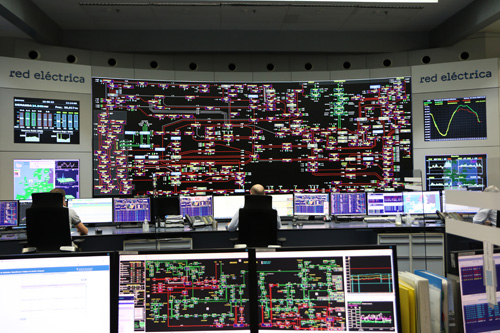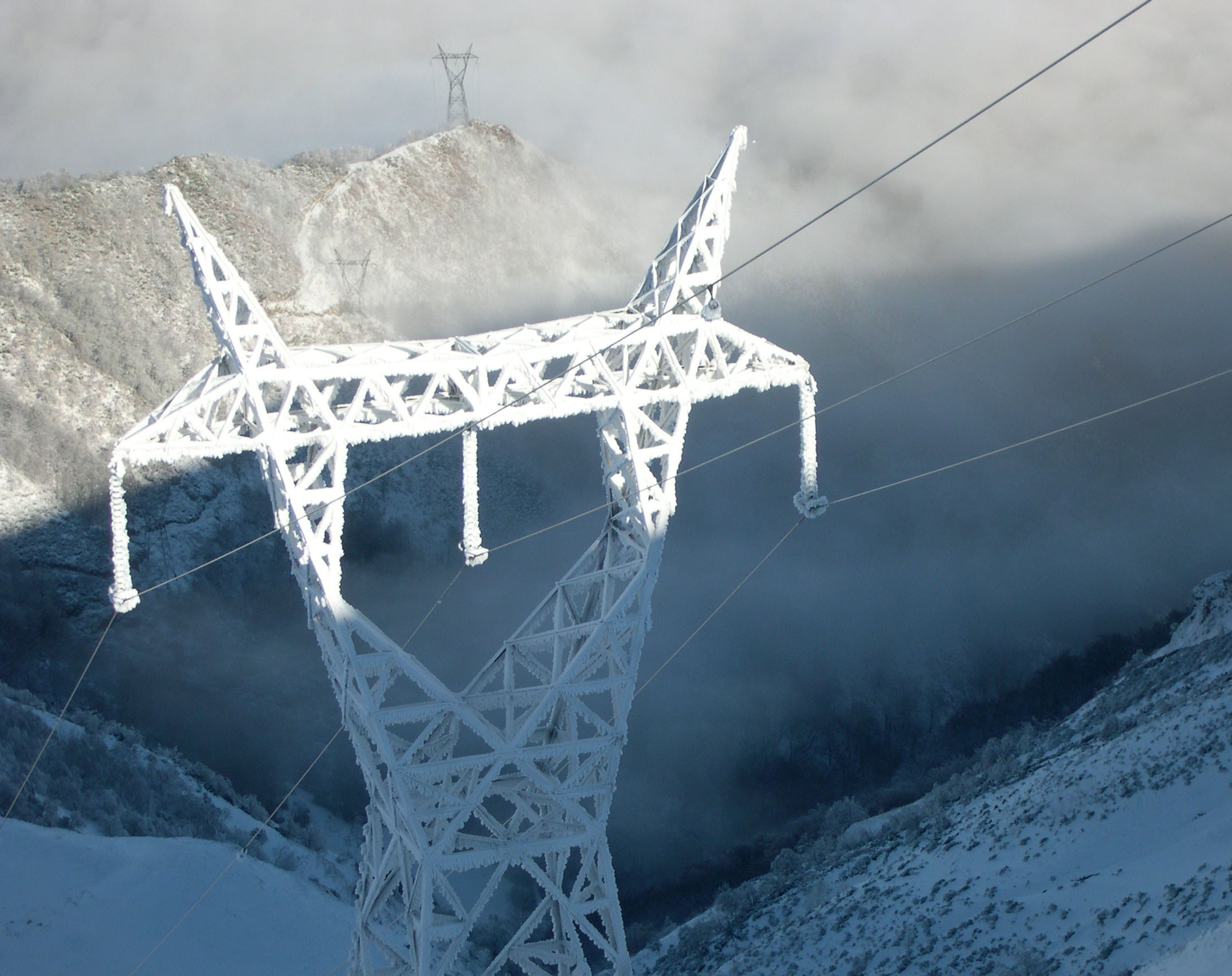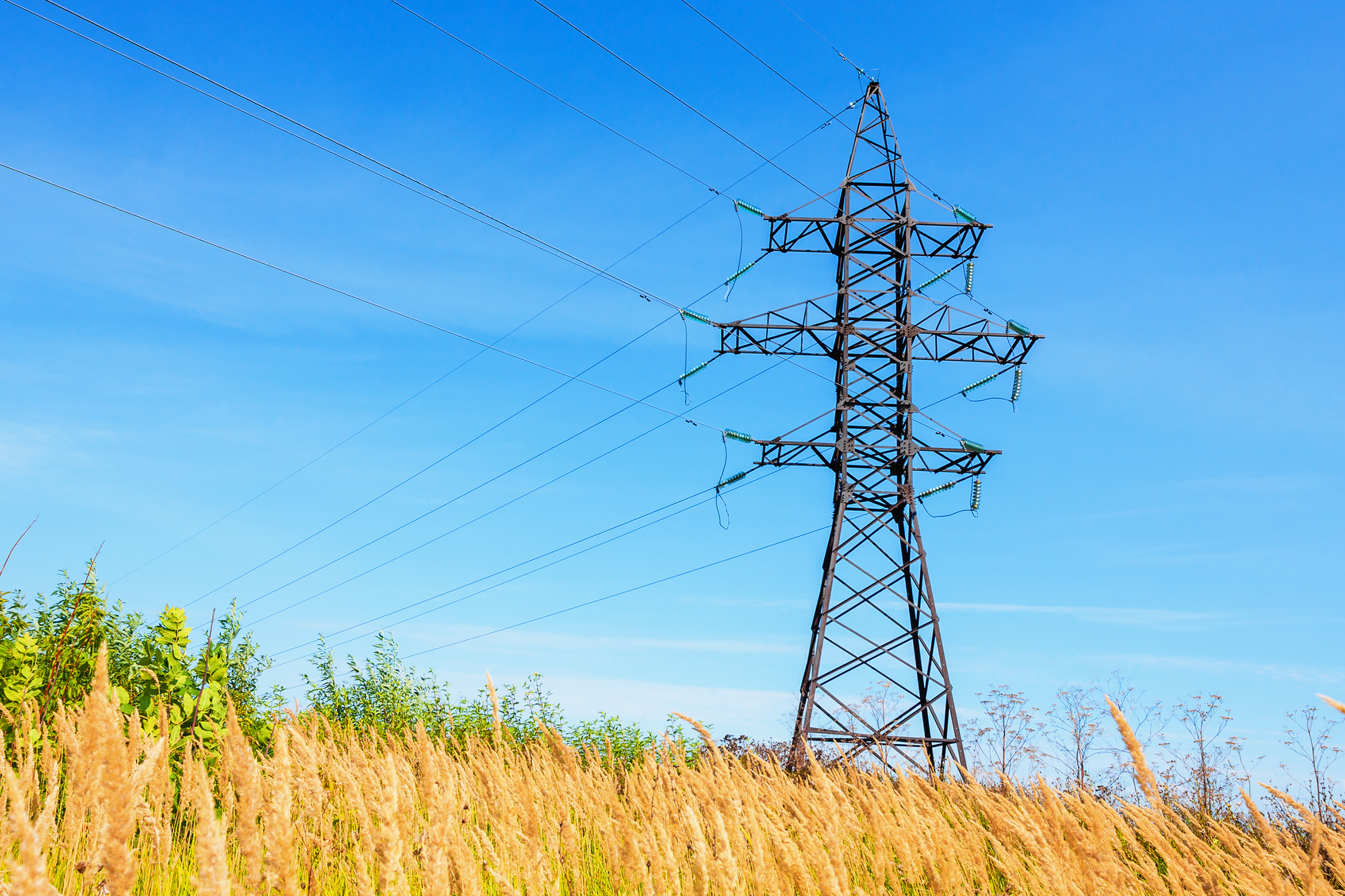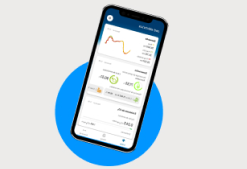For 40 years, we've been driving our country's economic and social progress. Four decades shaping Spain.
European network codes
European network codes
At the European level, network codes and guidelines are legally binding rules adopted by the European Commission.

The European network codes (NCs) and its Spanish implementation
The European NCs are sets of rules adopted by the European Union, through the Comitology process, to then be implemented across Member States under the form of EU regulations. When they become law, the network codes will have the same status as any other European regulation and will govern all electricity market transactions with a cross-border impact.
The need for establishing European NCs was identified during the course of developing the Third Energy Package for an internal gas and electricity market of the EU. The legislative framework assigns specific roles to the following entities: The European Commission (EC) to initiate the development of and to adopt NCs, the Agency for the Cooperation of Energy Regulators (ACER) to release framework guidelines for NCs and to recommend the adoption of NC to the EC and the Network of Transmission System Operators for Electricity (ENTSO-E) to draft NCs.
As defined in Regulation EC N° 714/2009, the European NCs contribute to the harmonization, integration and efficiency of the European electricity market. Each NC is an integral part of the drive towards completion of the internal energy market and achieving the European Union’s energy objectives.
The network codes cover three main topics. For more details, visit https://www.entsoe.eu/major-projects/network-code-development/Pages/default.aspx
tabs
Within the European NCs, are three Connection Network Codes (CNC), which establish a set of rules and technical requirements for the generators, demand facilities and distribution energy systems, together with High Voltage Direct Current (HVDC) systems connected to the network.
| In 2020 the national Regulation for the national implementation of the CNC was published in a Royal Decree and a Ministerial Order. These regulatory texts are based on the proposals submitted by the network operators throughout 2018, which were discussed in the working groups created for this purpose in the national process of implementing the CNCs. |
Contact
Please, refer to the Spanish version.
Texts of the European connection network codes
- Commission Regulation (EU) 2016/631 of 14 April 2016 establishing a network code on requirements for grid connection of generators, which was published on the Official Journal of the European Union on 27th April 2016.
- Commission Regulation (EU) 2016/1388 of 17 August 2016 establishing a Network Code on Demand Connection, which was published on the Official Journal of the European Union on 18th August 2016.
- Commission Regulation (EU) 2016/1447 of 26 August 2016 establishing a network code on requirements for grid connection of high voltage direct current systems and direct current-connected power park modules, which was published on the Official Journal of the European Union on 18th August 2016.
National implementation process
The three connection network codes (CNCs) have, due to several reasons, a major impact in system operation, the transmission grid and the distributions grid, as well as generation facilities, demand facilities and HVDC systems. With the aim of coordinating the development of the national legislative framework for the correct and on time adoption of the CNCs, as well as to ensure transparency and guide, focus and solve efficiently the discussion topics, Red Eléctrica proposed to the Ministry and CNMC to coordinate the process through the establishment of three working groups for the Implementation of the CNCs in Spain. This structure was presented on the 5th July 2016 in an extraordinary meeting of the “Grupo de Seguimiento de la Planificación”.
- Group for the Coordination of the Implementation (GCI).
- Working Group with generators (GTGen).
- Working Group with Consumers (GTCon).
Compliance monitoring Scheme for Connectees
With the aim of coordinating the compliance monitoring process of the CNCs, as well as ensuring transparency, and guide, focus and solve efficiently the discussion topics regarding the definition of compliance schemes for connectees, two working groups (GTSup) established:
GTSup-Generation
Working group for Compliance Monitoring of technical requirements within Regulation 2016/631 for Power Generating Modules (PGM).
TECHNICAL STANDARDS FOR THE COMPLIANCE OF GENERATORS (NTS-GENERATORS)
On 9th July 2021 the version 2.1 of the Technical standard for monitoring the compliance of power generating modules (NTS), applicable to the electrical system of peninsular territory was published:
- Technical Standard for compliance of PGM
- Corrigendum of NTS-Generation version 2.1 (8/10/2021) (only available in Spanish)
- Annex to NTS-Generation version 2.1 related to inertia emulation and power oscillation damping reports (2/06/2025) (only available in Spanish)
which enables the assessment of the compliance of power generating modules with the following national regulation, resulting from the national implementation of the European connection network codes:
- July 2020: Publication of “Real Decreto 647/2020”, de 7 de julio, por el que se regulan aspectos necesarios para la implementación de los códigos de red de conexión a determinadas instalaciones eléctricas (only available in Spanish).
- August 2020: Publication of “Orden TED 749/2020”, de 16 de julio, por la que se establecen los requisitos técnicos para la conexión a la red necesarios para la implementación de los códigos de red de conexión (only available in Spanish).
In addition, the version 1.1 of the Technical standard for monitoring the compliance of power generating modules applicable to the electrical systems of non-peninsular territories according to P.O. 12.2 SENP (NTS SENP) was published, which enables the assessment of the compliance of power generating modules with Procedimiento de Operación 12.2 SENP according to “Real Decreto 647/2020”:
- Technical Standard for compliance of PGM SENP
- Corrigendum of NTS SENP-Generation version 1.1 (8/10/2021) (only available in Spanish)
In the event of any inconsistency or discrepancy between the Spanish versions and the English versions of both NTS, the Spanish version prevails.
The compliance monitoring scheme set out in both NTS is limited to the connection of the PGMs for obtaining the final operating notification (FON). However, the power-generating facility owner shall ensure that each PGM complies with the requirements applicable throughout the lifetime of the facility.
Agreement of conditions and relay settings in radial networks at a voltage level of less than 66 kV in the electrical systems of non-peninsular territories:
Under the current national regulations covering the technical requirements for the connection of power generating modules in non-peninsular territories (Procedimiento de Operación 12.2 SENP) and with the aim of coordinating and making compatible the voltage stability requirements and protection settings for overvoltages considered in such regulation and the needs of the protection settings in radial networks at a voltage level of less than 66 kV considered by EDistribución Redes Digitales in its standard NRZ104, has been signed by Red Eléctrica, as System Operator, and EDistribución Redes Digitales, as Distribution System Operator of its network in these territories, the following agreement dated 1 February 2023 that sets out the scope of the agreed relay settings and the criteria and conditions for their application. The technical content of said agreement is as follows:
- Publication of the EDRD REE agreement on overvoltage protections senp_re (only available in Spanish)
Contact:
Please, refer to the website in Spanish, both for the contact information and for the guide to prepare the reports on power oscillations damping (5.9 and 5.10 of NTS) and synthetic inertia (5.6 of NTS). From 16/6/2025 these reports will be evaluated by the authorised certifier.
GTSup-Consumers
Please, refer to Spanish version.
The Operation Network Codes establish the rules and procedures for the management of the transmission network and the operation of the system in emergency and restoration situations. The two regulations are:
Los Códigos de Red de Operación del Sistema establecen las reglas y procedimientos para la gestión de la red de transporte así como para la operación del sistema en situaciones de emergencia y reposición del servicio. Las dos normativas de operación del sistema son:
- Regulation (UE) 2017/1485 establishing a guideline on System Operation (GL SO), which was published in the Official Journal of the European Union (OJEU) on 25th August 2017 and entered into force on 14th September 2017. Both English and Spanish versions have been published. For more information on the GL SO click here.
- Regulation (UE) 2017/2196 establishing a network code on electricity emergency and restoration (NC ER), which was published in the Official Journal of the European Union (OJEU) on 28th November 2017 and entered into force on 18th December 2017. Both English and Spanish versions have been published. For more information about NC ER click here.
GL SO
The objective of this guideline is to establish the basis for the management of the transmission network and the operation of the system. The GL SO covers three big areas:
- Operational Security
- Operational Planning
- Load-Frequency control and reserves
In accordance with article 8 of GL SO, the Transmission System Operator, as responsible for establishing the terms and conditions or methodologies, shall publish them on the internet after approval by the competent regulatory authorities or, if no such approval is required, after their establishment, except where such information is considered as confidential in accordance with Article 12 of this guideline.
TERMS AND CONDITIONS OR METHODOLOGIES ALREADY APPROVED AND PUBLISHED IN ACCORDANCE WITH GL SO
- Proposal for a year-ahead, day-ahead and intraday common grid model methodology (CGMM) in accordance with article 67(1) and article 70 of GL SO. This document was approved by CNMC on 12th July 2018.
- Amended LFC Block determination proposal for the Synchronous Area Continental Europe in accordance with article 141(2) of GL SO. This document was approved by CNMC on 6th September 2018.
- Proposal for the key organisational requirements, roles and responsibilities (KORRR) relating to data exchange in accordance with Article 40(6) of SO GL after request for amendments by all regulatory authorities of EU. This document was approved by CNMC on 23th January 2019. Supporting document to all TSOs’ proposal for the key organisational requirements, roles and responsibilities relating to data exchange.
- Proposal for the dimensioning rules for FCR in accordance with Article 153(2) of the Commission Regulation (EU) 2017/1485 of 2nd August 2017, establishing a guideline on electricity transmission system operation. This document was approved by CNMC on 4th April 2019.
- Proposal for the limits on the amount of exchange and sharing of FRR between of FRR between synchronous areas in accordance with Article 176(1) and Article 177(1) of the Commission Regulation (EU) 2017/1485 of 2nd August 2017, establishing a guideline on electricity transmission system operation. This document was approved by CNMC on 4th April 2019.
- Proposal for the limits on the amount of exchange and sharing of RR between synchronous areas in accordance with Article 178(1) and Article 179(1) of the Commission Regulation (EU) 2017/1485 of 2nd August 2017, establishing a guideline on electricity transmission system operation. This document was approved by CNMC on 4th April 2019.
- Proposal assumptions and the methodology for a cost-benefit analysis in accordance with Article 156(11) of the GL SO. This document was approved by CNMC on 4th April 2019. Explanatory document of the proposal for assumptions and methodology for a Cost Benefit Analysis (CBA).
- Proposal for the methodology for coordinating operational security analysis (CSAM), in accordance with Article 75 of the GL SO, and proposal for the methodology for assessing the relevance of assets for outage coordination (RAOCM). Both the first document and the second document have been approved by ACER, date 19th June 2019. On 14 June 2021, ACER has published its decision to the amendment submitted by all TSOs on articles 21 and 27 of the CSAM. On 13 May 2024, ACER has published a second amendment of the CSAM that modifies the articles 6, 7 and 42.
- Proposal for the methodology and conditions included in the operational Load-Frequency Control Block agreements of the Spanish peninsular electrical system, with the application of Article 6(3) e. This document was approved by CNMC on 10th October 2019.
- Specifications for the national implementation of the methodology in relation to Article 40(6) of GL SO, approved by CNMC on 13th November 2019 and published on the CNMC web and on the BOE.
- The common provisions for regional operational security coordination for SWE CCR in accordance with article 76 of SO GL- ROSC, approved by CNMC on 10th December 2020 and published on the CNMC web.
- All CE TSOs’ proposal for additional properties of FCR in accordance with Article 154(2) of the Commission Regulation (EU) 2017/1485 of 2 August 2017 establishing a guideline on electricity transmission system operation. This document was approved by CNMC on 4th March 2021.
- All CE TSOs’ proposal for assumptions and methodology for FCR probabilistic dimensioning in accordance with Article 153(2) of the Commission Regulation (EU) 2017/1485 of 2 August 2017 establishing a guideline on electricity transmission system operation. This document and the technical annex was approved by CNMC on 23th January 2025.
TERMS AND CONDITIONS OR METHODOLOGIES SUBMITTED FOR APPROVAL IN ACCORDANCE WITH GL SO
- TSO's proposal in coordination with DSOs and SGUs, for the applicability and scope of the data exchange in the Spanish electric system, in accordance with Article 40(5) of GL SO. This proposal, together with a non-binding supporting document and the comments received in the public consultation analyzed, has been sent to the Ministry for the Ecological Transition (Ministerio para la Transición Ecológica) for its approval, dated 14 March 2019.
- Proposal for the General Protection Criteria of the Spanish Electrical System that establishes the requirements that define the protection system that has to be installed in each element to minimize the repercussions that can be caused by the different disturbances that occur in the electrical system in accordance with the Article 36 (2). This proposal, together with a report and the comments received in the public consultation analyzed, has been sent to the CNMC for approval on 27 June 27 2024.
NC ER
In order to safeguard operational security, to prevent the propagation or the deterioration of an incident so as to avoid a general disturbance in the system, as well as to allow a quick and efficient restoration of the system after and emergency state or blackout, the NC ER determines the requirements associated to the following topics:
a. management of emergency, blackout or restoration state by the TSO;
b. coordination of system operation across the Union in the emergency, blackout and restoration states;
c. simulations and testing;
d. necessary tools and facilities in order to guarantee a reliable, efficient and quick restoration.
This Regulation is composed of the following chapters:
- General provisions
- System defence plan
- Restoration plan
- Market interactions
- Information exchange and communication, tools and facilities
- Compliance and review
- Implementation
DOCUMENTS ALREADY APPROVED FOR THE RELEVANT REGULATORY
- Proposal of «Rules for suspension and restoration of market activities» and «Rules for imbalance settlement and settlement of balancing energy in case of suspension of market activities», in accordance with article 4 (2) (e) (f) of NC ER. P.O.3.9 “Suspension and restoration of market activities” includes both rules and it has been approved by CNMC on 10th December 2020.
DOCUMENTS SUBMITTED TO THE RELEVANT REGULATORY AUTHORITY FOR APPROVAL IN ACCORDANCE WITH NC ER
- Os Proposal of «Terms and conditions to act as defence service providers», in accordance with article 4 (2) (a). This proposal was submitted to the DGPEM for approval on 18th December 2018.
- Os Proposal of «Terms and conditions to act as restoration service providers», in accordance with article 4 (2) (b). This proposal was submitted to the CNMC for approval on 18th December 2018.
- Os Proposal of «Rules for suspension and restoration of market activities» and «Rules for imbalance settlement and settlement of balancing energy in case of suspension of market activities», in accordance with article 4 (2) (e) (f). This proposal was submitted to the CNMC for approval on 18th December 2018.
PUBLIC CONSULTATION OF OS PROPOSALS FOR NC ER IMPLEMENTATION
- Os Proposal for «Test Plan».
Within the European Network Codes and Guidelines, we find Market Guidelines, which lay the foundations for the creation of the Internal Electricity Market in the framework of capacity calculation and allocation of capacity for long term, day-ahead and intraday timeframes and in the operation of the electricity balancing markets. The three Market Guidelines are:
- Regulation (UE) 2015/1222 establishing a guideline on Capacity Allocation and Congestion Management (GL CACM), which was published in the Official Journal of the European Union (OJEU) on 25 July 2015 and entered into force on 14 August 2015. Both English and Spanish versions have been published. For more information on the GL CACM click here.
- Regulation (UE) 2016/1719 establishing a guideline on Forward Capacity Allocation (GL FCA), which was published in the Official Journal of the European Union (OJEU) on 27 September 2016 and entered into force on 17 October 2016. Both English and Spanish versions have been published. For more information about GL FCA click here.
- Regulation (UE) 2017/2195 establishing a guideline on Electricity Balancing (GL EB), which was published in the Official Journal of the European Union (OJEU) on 28 November 2017 and entered into force on 18 December 2017. Both English and Spanish versions have been published. For more information about GL EB click here.
GL CACM
This European guideline on Capacity Allocation and Congestion Management establishes the European regulatory framework applicable in day-ahead and intraday markets of the Internal Energy Market (IEM).
In accordance with article 9 of GL CACM, the Transmission System Operator shall publish the terms and conditions or methodologies for which the TSO is responsible on this site after approval by the competent regulatory authorities or, if no such approval is required, after their establishment, except where such information is considered as confidential in accordance with Article 13.
TERMS AND CONDITIONS OR METHODOLOGIES ALREADY APPROVED AND PUBLISHED IN ACCORDANCE WITH GL CACM
- Article 15. Capacity calculation regions. This document was approved by ACER on 19 March 2024.
- Article 16. Generation and load data provision methodology. This document was approved by CNMC on 10 January 2017.
- Article 17. Common grid model methodology. This document was approved by CNMC on 18 May 2017.
- Article 21. Capacity calculation methodology. This document was approved by all regulatory entities of SWE region on 18 January 2022.
- Article 35. Coordinated redispatching and countertrading. This document was approved by CNMC on 24 May 2019.
- Article 43. Methodology for calculating scheduled exchanges resulting from single day-ahead coupling. This document was approved by ACER on 30 May 2023.
- Article 44. Establishment of fallback procedures. These documents (DA Fallback Procedures in SWE region for day- ahead market coupling, Shadow Allocation Rules) were approved by all regulatory entities of SWE region on 16 March 2022.
- Article 55. Pricing of intraday capacity. This document was approved by ACER on 24 January 2019.
- Article 56. Methodology for calculating scheduled exchanges resulting from single intraday coupling. This document was approved by CNMC on 14 March 2019.
- Article 59. Operation of single intraday coupling. This document was approved by ACER on 24 April 2018.
- Article 63. Complementary regional auctions. This document was approved by CNMC on 13 April 2018.
- Article 69. Proposal for day-ahead firmness deadline. This document was approved by CNMC on 8 June 2017.
- Article 73. Congestion income distribution methodology. This document was approved by ACER on 22 December 2023.
- Article 74. Redispatching and countertrading cost sharing methodology. This document was approved by CNMC on 24 May 2019.
METHODOLOGIES FROM OTHER REGIONS CAN BE FOUND HERE.
GL FCA
This European guideline on Forward Capacity Allocation establishes the European regulatory framework applicable to long-term capacity allocation of the Internal Energy Market (IEM).
In accordance with article 4 of GL FCA, the Transmission System Operator shall publish the terms and conditions or methodologies for which the TSO is responsible on this site after approval by the competent regulatory authorities or, if no such approval is required, after their establishment, except where such information is considered as confidential in accordance with article 7 of GL FCA.
TERMS AND CONDITIONS OR METHODOLOGIES ALREADY APPROVED AND PUBLISHED IN ACCORDANCE WITH GL FCA
- Article 10. Capacity calculation methodology. This document was approved by CNMC on 10 March 2020.
- Article 16. Methodology for splitting long-term cross-zonal capacity. This document was approved by CNMC on 10 March 2020.
- Article 17. Generation and load data provision methodology. This document was approved by European regulatory authorities through European Regulatory Forum and by CNMC on 27 February 2018.
- Article 18. Common grid model methodology. This document was approved by European regulatory authorities on 12 July 2018.
- Article 31. Regional design of long-term transmission rights. This document was approved by CNMC on 17 October 2017.
- Article 36. General provisions for physical transmission rights nomination. This document was approved by CNMC on 20 September 2018.
- Article 49 and 59. Functional requirements and Cost of establishing, developing and operating the single allocation platform. This document was approved by ACER on 22 March 2023.
- Article 51. Introduction of harmonised allocation rules. This document was approved by ACER on 22 December 2023.
- Article 52. Requirements for the harmonised allocation rules. This document was approved by CNMC on 28 November 2018.
- Article 57. Congestion income distribution methodology. This document was approved by ACER on 22 March 2023.
- Article 61. Cost of ensuring firmness and remuneration of long-term transmission rights. This document was approved by ACER on 22 March 2023.
METHODOLOGIES FROM OTHER REGIONS CAN BE FOUND HERE.
GL EB
This European guideline on Electricity Balancing establishes the European regulatory framework applicable in the field of the exchange and activation of balancing services of the Internal Energy Market (IEM).
The GL EB establishes the common principles and standards for the development, implementation, operation and monitoring of European platforms for the exchange of balancing services, as well as the procurement and settlement principles:
- Frequency Containment Reserves (FCR), which corresponds, in European terminology, to the primary regulation service.
- Automatic Frequency Restoration Reserve (aFRR) which corresponds, in European terminology, to the secondary regulation service. The European Platform PICASSO (Platform for the International Coordination of Automated Frequency restoration and Stable System Operation) for the exchange of aFRR energy, and the European Platform IGCC (International Grid Control Operation) for the imbalance netting process (IN) of aFRR energy.
- Manually Activated Restoration Reserve (mFRR), which corresponds, in European terminology, to the tertiary regulation service. The European platform MARI (Manually Activated Reserves Initiative) for the exchange of mFRR energy.
- Replacement Reserves (RR). The European Platform TERRE (Trans-European Replacement Reserves Exchange) for the exchange of RR energy.
In accordance with article 7 of the EB GL, the Transmission System Operator shall the terms and conditions of methodologies for which the TSO is responsible on this site after approval by the competent regulatory authorities or, if no such approval is required, after their establishment, except where such information is considered as confidential in accordance with Article 11 of the EB GL.
TERMS AND CONDITIONS OR METHODOLOGIES ALREADY APPROVED AND PUBLISHED IN ACCORDANCE WITH GL EB
- Article 18. Terms and Conditions for Balancing Service Providers (BSP) and for Balance Responsible Parties (BRP). This document was approved by CNMC on 25 April 2024.
- Article 19. Implementation Framework for a European platform for the exchange of balancing energy from replacement reserves (RR). This document was approved by CNMC on 23 March 2023.
- Article 20. Implementation Framework for a European platform for the exchange of balancing energy from frequency restoration reserves with manual activation (mFRR). This document was approved by ACER on 30 September 2022.
- Article 21. Implementation Framework for a European platform for the exchange of balancing energy from frequency restoration reserves with automatic activation (aFRR). This document was approved by ACER on 5 July 2024.
- Article 22. Implementation framework for a European platform for the imbalance netting process (IN). This document was approved by ACER on 30 September 2022.
- Article 25. Methodology for a list of standard products for balancing capacity for frequency restoration reserves and replacement reserves. This document was approved by ACER on 17 June 2020.
- Article 29. Methodology for classifying the activation purposes of balancing energy bids. This document was approved by ACER on 15 July 2020.
- Article 30. Methodology for pricing of balancing energy and cross-zonal capacity. This document was approved by ACER on 5 July 2024.
- Article 37. Methodology of cross-zonal capacity calculation methodology for balancing platforms in SWE region. This document was approved by CNMC on 29 June 2023.
- Article 38 and 40. Methodology for hamonising processes for the allocation of cross-zonal capacity for the exchange of balancing capacity or sharing of reserves. This document was approved by ACER on 19 July 2023.
- Article 50. Common settlement rules applicable to all intended exchanges of energy. This document was approved by ACER on 15 July 2020.
- Article 50 and 51. Common settlement rules for intended exchanges of energy as a result of the frequency containment process and ramping period (CCFR) and Common settlement rules for all unintended exchanges of energy (CCFR). This document was approved by CNMC on 3 June 2020.
- Article 52. Methodology for the harmonisation of the main features of imbalance settlement – ISHP. This document was approved by ACER on 15 July 2020.
ROADMAP FOR THE IMPLEMENTATION OF IEM
- Roadmap proposal of the System Operator for the implementation of GL EB in the Spanish Electric System, submitted to the CNMC on 29 March 2019.
- Updated version of the Roadmap proposal of the System Operator for the implementation of GL EB in the Spanish Electric System, dated 3 February 2020.
- Updated version of the Roadmap proposal of the System Operator for the implementation of Regulation EB in the Spanish Electric System, dated 23 March 2020.
- Updated version of the Roadmap proposal of the System Operator for the implementation of Regulation EB in the Spanish Electric System, dated 30 April 2020.
- Updated version of the Roadmap proposal of the System Operator for the implementation of Regulation EB in the Spanish Electric System, dated 19 June 2020.
- Updated version of the Roadmap proposal of the System Operator for the implementation of Regulation EB in the Spanish Electric System, dated 28 September 2020.
- Updated version of the Roadmap proposal of the System Operator for the implementation of Regulation EB in the Spanish Electric System, dated 23 October 2020.
- Updated version of the Roadmap proposal of the System Operator for the implementation of Regulation EB in the Spanish Electric System, dated 18 March 2021.
- Updated version of the Roadmap proposal of the System Operator for the implementation of Regulation EB in the Spanish Electric System, dated 7 July 2021.
- Updated version of the Roadmap proposal of the System Operator for the implementation of Electricity Balancing EU Regulation in the Spanish Electric System, dated 11 November 2021.
- Updated version of the Roadmap proposal of the System Operator for the implementation of Electricity Balancing EU Regulation in the Spanish Electric System, dated 20 April 2022.
- Updated version of the Roadmap proposal of the System Operator for the implementation of Electricity Balancing EU Regulation in the Spanish Electric System, dated 20 September 2022.
- Updated version of the Roadmap proposal of the System Operator for the implementation of Electricity Balancing EU Regulation in the Spanish Electric System, dated 23 March 2023.
- Updated version of the Roadmap proposal of the System Operator for the implementation of the Internal Energy Market in the Spanish Electric System, dated 30 November 2023.
- Updated version of the Roadmap proposal of the System Operator for the implementation of the Internal Energy Market in the Spanish Electric System, dated March 12th, 2024.
- Updated version of the Roadmap proposal of the System Operator for the implementation of the Internal Energy Market in the Spanish Electric System, dated July 5th, 2024.
BALANCING PLATFORMS ACCESSION ROADMAP
- mFRR-Platform Accession roadmap, published on 24 April 2020.
- aFRR-Platform Accession roadmap, published on 24 April 2020.
- mFRR-Platform Accession roadmap update, published on 14 November 2020.
- aFRR-Platform Accession roadmap update, published on 24 October 2020.
- mFRR-Platform Accession roadmap update, published on 24 April 2021.
- aFRR-Platform Accession roadmap update, published on 27 April 2021.
- mFRR-Platform Accession roadmap update, published on 29 October 2021.
- aFRR-Platform Accession roadmap update, published on 26 October 2021.
- mFRR-Platform Accession roadmap update, published on 28 April 2022.
- aFRR-Platform Accession roadmap update, published on 27 April 2022.
- mFRR-Platform Accession roadmap update, published on 25 October 2022.
- aFRR-Platform Accession roadmap update, published on 25 October 2022.
- mFRR-Platform Accession roadmap update, published on 28 April 2023.
- aFRR-Platform Accession roadmap update, published on 28 April 2023.
- mFRR-Platform Accession roadmap update, published on 25 October 2023.
- aFRR-Platform Accession roadmap update, published on 25 October 2023.
- mFRR-Platform Accession roadmap update, published on the 29th February 2024.
- aFRR-Platform Accession roadmap update, published on the 27th February 2024.
- mFRR-Platform Accession roadmap update, published on the 26th April 2024.
- aFRR-Platform Accession roadmap update, published on the 25th April 2024.
- mFRR-Platform Accession roadmap update, published on the 6th July 2024.
- aFRR-Platform Accession roadmap update, published on the 28th June 2024.












